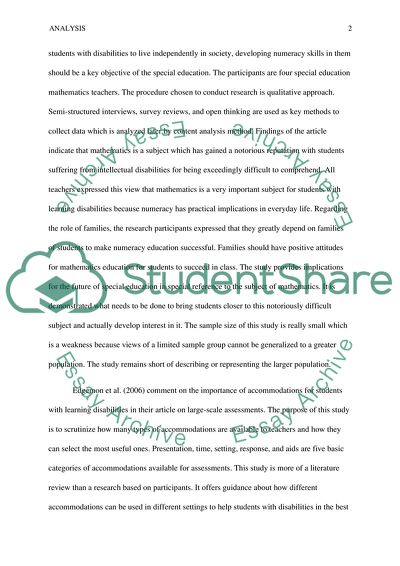Cite this document
(Special Education for Teachers Teaching Mathematics Literature review Example | Topics and Well Written Essays - 1500 words, n.d.)
Special Education for Teachers Teaching Mathematics Literature review Example | Topics and Well Written Essays - 1500 words. https://studentshare.org/education/1866554-analysis-of-studies-review-and-critique
Special Education for Teachers Teaching Mathematics Literature review Example | Topics and Well Written Essays - 1500 words. https://studentshare.org/education/1866554-analysis-of-studies-review-and-critique
(Special Education for Teachers Teaching Mathematics Literature Review Example | Topics and Well Written Essays - 1500 Words)
Special Education for Teachers Teaching Mathematics Literature Review Example | Topics and Well Written Essays - 1500 Words. https://studentshare.org/education/1866554-analysis-of-studies-review-and-critique.
Special Education for Teachers Teaching Mathematics Literature Review Example | Topics and Well Written Essays - 1500 Words. https://studentshare.org/education/1866554-analysis-of-studies-review-and-critique.
“Special Education for Teachers Teaching Mathematics Literature Review Example | Topics and Well Written Essays - 1500 Words”. https://studentshare.org/education/1866554-analysis-of-studies-review-and-critique.


